Voltcraft GD-3000 Handleiding
Voltcraft
Meetapparatuur
GD-3000
Bekijk gratis de handleiding van Voltcraft GD-3000 (3 pagina’s), behorend tot de categorie Meetapparatuur. Deze gids werd als nuttig beoordeeld door 39 mensen en kreeg gemiddeld 4.5 sterren uit 20 reviews. Heb je een vraag over Voltcraft GD-3000 of wil je andere gebruikers van dit product iets vragen? Stel een vraag
Pagina 1/3

쮕B E D I E N U N G S A N L E I T U N G °
Version 11/08
Gasdetektor GD-3000
Best.-Nr. 12 65 04
Bestimmungsgemäße Verwendung
Der Gasdetektor ist ein autarkes sehr empfindliches Warnsystem. Das Gerät besteht aus einem Gassensor, einem akustischen
Signalgeber, einer visuellen Zustandsanzeige und einer Spannungsversorgung. Das Gerät spricht auf Erdgas und Propangas
an. Das Gerät dient zur Erkennung von ausströmenden Gas an kleinen Flüssiggasbehältern, wie z.B. Campinggaskartuschen,
Gasfeuerzeugen, Gaslötkolben, etc. und ist nicht für den Dauerbetrieb, sondern nur für Kurzzeitbetrieb geeignet
(Batterielebensdauer beachten). Das Gerät ist nur als Hilfsmittel zu sehen. Bei begründetem Verdacht eines Gasaustritts, vor
allem bei komplexen Gassystemen, wie Heizungen oder Herden, ist von einer eigenen Messung abzusehen und immer der
Fachmann zu Verständigen; für solche Messungen ist dieses Gerät nicht geeignet. Begeben Sie sich nicht unnötig in Gefahr;
überlassen Sie bei festgestellten Gaslecks alles weitere, vor allem die Reparatur einem Fachmann, der mit den entsprechen-
den Gefahren und Vorschriften vertraut ist. Das Gerät ist nicht für den gewerblichen, industriellen Einsatz geeignet. Beachten
Sie auch alle weiteren Sicherheitshinweise in dieser Anleitung.
Sicherheits- und Gefahrenhinweise
Ein in einem Dreieck befindliches Ausrufezeichen weist auf wichtige Hinweise in der Bedienungs-
anleitung hin. Lesen Sie bitte vor Inbetriebnahme die komplette Anleitung durch, sie enthält wichtige
Hinweise zum korrekten Betrieb.
• Bei Schäden, die durch Nichtbeachten dieser Bedienungsanleitung verursacht werden, erlischt der Garantieanspruch! Für
Folgeschäden übernehmen wir keine Haftung!
• Bei Sach- oder Personenschäden, die durch unsachgemäße Handhabung oder Nichtbeachten der Sicherheitshinweise ver-
ursacht werden, übernehmen wir keine Haftung! In solchen Fällen erlischt jeder Garantieanspruch.
• Aus Sicherheits- und Zulassungsgründen (CE) ist das eigenmächtige Umbauen und/oder Verändern des Gerätes nicht
gestattet.
• Achten Sie auf eine sachgerechte Inbetriebnahme des Gerätes. Beachten Sie hierbei diese Bedienungsanleitung.
• Gießen Sie nie Flüssigkeiten über dem Gasdetektor aus. Es besteht die Gefahr, dass das Gerät beschädigt wird.
• Das Gerät darf keinen extremen Temperaturen, starken Vibrationen oder hoher Feuchtigkeit ausgesetzt werden.
• Vermeiden Sie eine starke mechanische Beanspruchung des Gerätes. Der Gasdetektor ist mit hochwertiger Elektronik aus-
gerüstet und reagiert deshalb sehr empfindlich auf Stöße, Schläge, etc., dies kann den Gasdetektor zerstören.
• Ebenso kann direktes starkes Pusten auf den Gassensor (1) oder Nässe diesen beschädigen, bzw. zerstören.
• Behandeln Sie den Gasdetektor mit Sorgfalt. Dieses Gerät gehört nicht in Kinderhände.
Bedienelemente
1 Gassensor
Der Sensor ist das Herzstück des Gasdetektors, er erkennt Gas und wandelt diese Information
in für die Auswertelektronik verständliche elektrische Impulse um.
2 Rote Gas-Anzeige LED
Die LED leuchtet auf, wenn das Gerät einen Alarm aufgrund des Erkennens von Gas auslöst
bzw. in der Aufheizphase (die grüne Anzeige (3) erlischt).
3 Grüne Betriebs-Anzeige-LED
Die LED leuchtet, wenn das Gerät eingeschaltet ist und die Batterien noch über ausreichend
Kapazität verfügen. Die LED leuchtet nicht , wenn die Batterien entladen sind bzw. in der
Aufheizphase oder wenn Gas detektiert wurde.
4 STATIC-Anzeige-LED
Die LED leuchtet auf, sobald das Gerät eine statische Entladung erkennt.
5 Ein/Aus-Schiebeschalter (ON/OFF)
"ON" das Gerät ist eingeschaltet; "OFF" das Gerät ist ausgeschaltet.
6 Rückseitiger Batteriefachdeckel
mit Trageschlaufe
7 Schutzabdeckung
Die Abdeckung schützt den empfindlichen Gassensor vor Beschädigung. Nehmen Sie die
Abdeckung vor dem Gebrauch ab.
8 Rückseitige Static-Antenne
Einlegen/Wechseln der Batterien
Ein Betrieb des Gerätes ist nur mit Batterien zulässig. Akkus sind für den Betrieb nicht geeignet.
• Schieben Sie den Batteriefachdeckel (6) in Pfeilrichtung vom Gerät.
• Legen Sie zwei Mikro-Batterien (AAA) in das Batteriefach ein. Der Pluspol der Batterien muss dabei in Richtung Gassensor
(1) zeigen. Verwenden Sie möglichst Alkaline Batterien, da diese eine längere Betriebszeit garantieren.
• Schließen Sie den Batteriefachdeckel wieder sorgfältig.
Ein Batteriewechsel ist nötig, wenn die grüne Anzeige LED (3) nach dem Einschalten nicht mehr aufleuchtet oder das Gerät
nicht mehr richtig reagiert.
Um eine Beschädigung des Gerätes durch auslaufende Batterien zu verhindern, entfernen Sie die Batterien aus dem Gerät,
wenn Sie das Gerät für längere Zeit nicht benötigen.
Aus dem gleichen Grund ist es anzuraten, leere Batterien sofort zu entfernen.
Entsorgung von gebrauchten Batterien/Akkus!
Sie als Endverbraucher sind gesetzlich zur Rückgabe aller gebrauchten Batterien und Akkus verpflich-(Batterieverordnung)
tet; eine Entsorgung über den Hausmüll ist untersagt!
Schadstoffhaltige Batterien/Akkus sind mit nebenstehenden Symbolen gekennzeichnet, die auf das
Verbot der Entsorgung über den Hausmüll hinweisen. Die Bezeichnungen für das ausschlaggebende
Schwermetall sind: = Cadmium, = Quecksilber, = Blei. Ihre verbrauchten Batterien/AkkusCd Hg Pb
können Sie unentgeltlich bei den Sammelstellen Ihrer Gemeinde unseren Filialen oder überall dort
abgeben, wo Batterien/Akkus verkauft werden!
Sie erfüllen damit die gesetzlichen Verpflichtungen und leisten Ihren Beitrag zum Umweltschutz!
Inbetriebnahme und Bedienung
Um eine sachgemäße Inbetriebnahme zu gewährleisten, lesen Sie vor Gebrauch unbedingt diese
Bedienungsanleitung mit den Sicherheitshinweisen vollständig und aufmerksam durch!
• Nehmen Sie die Schutzabdeckung (7) ab.
• Schalten Sie den Gasdetektor ein, indem Sie den Ein/Ausschaltknopf (5) in Stellung "ON" schieben.
• Das Gerät gibt einen kurzen Pfeifton wieder. Die rote Anzeige LED (2) leuchtet gleichzeitig auf, danach leuchtet die grüne
LED (3). Sollte die grüne LED nicht leuchten, ist ein Batteriewechsel nötig.
Wird das Gerät kurz nachdem es ausgeschaltet wurde wieder eingeschaltet, kann die Einschaltprozedur von
dem hier beschriebenen Ablauf abweichen, es ist dann z.B. kein Piepton zu hören oder die rote LED leuchtet
nicht, etc.. Schalten Sie das Gerät deshalb frühestens 60 Sekunden nach dem Ausschalten wieder ein.
• Nachdem der Pfeifton aufgehört hat und die grüne Anzeige LED (3) leuchtet, ist das Gerät einsatzbereit. Halten Sie das Gerät
mit dem Gassensor (1) in die Nähe des zu vermessenden Objektes, um evtl. ausströmendes Gas festzustellen.
• Sollte der Gasdetektor ausströmendes Gas feststellen, zeigt er dieses durch das Aufleuchten der roten Anzeige LED (2) an.
Zusätzlich ertönt ein Pfeifton. Das Gerät beendet den Alarmzustand, sobald die Gaskonzentration zu niedrig wird.
Achten Sie beim Gebrauch des Gasdetektors auf die unterschiedlichen Verhaltensweisen von Gas,
Flüssiggas z.B. ist schwerer als Luft und sinkt zu Boden, die höchste Gaskonzentration ist deshalb in
Bodennähe. Informieren Sie sich bei Ihren Gaswerken/Fachmann. Eine zu hohe Strömgeschwindigkeit
des Gases kann den Gassensor beschädigen, vermeiden Sie es den Gassensor direkt in einen starken
Luft/Gasstrom zu halten.
Statische Entladung
• Die STATIC Anzeige LED (4) leuchtet kurz auf, sobald das Gerät eine statische Entladung erkennt. Eine statische Aufladung
am menschlichen Körper entsteht häufig bei trockener Umgebung und bei Reibung von synthetischen Materialien. Diese
Aufladung kann sich durch einen Funken beim Berühren eines geerdeten Gegenstandes, z.B. Heizkörpers entladen.
• Auf der Unterseite des Gerätes ist ein Metallkontakt vorhanden.
• Berühren Sie vor einer Gasdetektion den Kontakt auf der Unterseite des Gerätes und mit der anderen Hand einen geerdeten
Gegenstand, z.B. Heizkörper. Sind Sie statisch aufgeladen leuchtet die STATIC Anzeige LED (4) kurz auf.
Diese Messung darf nicht im gleichen Raum wie die Gasdetektion durchgeführt werden, da durch den entste-
henden Funken ausgeströmtes Gas entzündet werden kann.
Die STATIC Probe sollte immer vor einer Gasdetektion durchgeführt werden. Bei starken statischen Aufladungen ist
von einer Gasdetektion abzusehen, da durch Bewegung des Menschen die statische Aufladung erneuert wird und
erneut Funken bei der Gasdetektion auftreten können.
Alarm
Sollte der Detektor Alarm geben (Piepton und rote LED leuchtet) , strömt am Objekt Gas aus. Abhängig von der vermutlich aus-
getretenen Gasmenge, öffnen Sie sofort alle Fenster und Türen, vermeiden Sie offenes Feuer und Funkenbildung, betätigen
Sie keine elektrischen Schalter. Verlassen Sie den Raum. Stellen Sie wenn möglich die Gaszufuhr ab.
Bei undichten Gassystemen ist sofort ein entsprechender Fachmann zu verständigen. Versuchen Sie nicht den Fehler
selbständig zu beheben!
Überprüfen des Gasdetektors
Halten Sie ein Gasfeuerzeug in die Nähe des Gassensors (1), lassen Sie Gas aus dem Feuerzeug ausströmen, ohne dass eine
Flamme am Feuerzeug brennt, der Gasdetektor muss nun einen Piepton wiedergeben und die Anzeige LED (2) rot aufleuch-
ten. Sollte dies nicht der Fall sein, sind die Batterien leer oder der Gasdetektor defekt.
Fehlalarm
Aufgrund der hohen Empfindlichkeit des Detektors ist ein Fehlalarm auch durch andere gasförmige Stoffe, wie Aerosole
(Haarsprays, Treibgas, Zigarettenrauch, etc.) nicht auszuschließen.
Wartung und Entsorgung
Überprüfen Sie regelmäßig die technische Sicherheit des Gasdetektors.
Es ist anzunehmen, dass ein korrekter Betrieb nicht mehr möglich ist, wenn:
• das Gerät sichtbare Beschädigungen aufweist
• nach längerer Lagerung unter ungünstigen Verhältnissen
• nach schweren Transportbeanspruchungen
• wenn die oben beschriebene Testfunktion nicht mehr korrekt abläuft.
Äußerlich sollte das Gerät nur mit einem weichen, trockenen Tuch oder Pinsel gereinigt werden. Verwenden Sie auf keinen Fall
aggressive Reinigungsmittel oder chemische Lösungen, da dadurch das Gehäuse angegriffen oder die Funktion beeinträchtigt
werden könnte.
Vermeiden Sie es den Gassensor (1) zu berühren oder diesen auf irgendwelche Art zu reinigen.
Versuchen Sie nicht, abgesehen vom Batteriefach, das Gehäuse, zu öffnen.
Entsorgen Sie das unbrauchbare Gerät gemäß den geltenden gesetzlichen Vorschriften.
Technische Daten
Betriebsspannung ...........................................................: 3 VDC (2x Mikro Batterien (AAA), Alkaline)
Stromverbrauch ..............................................................: ca. 200 mA
Gasarten auf die das Gerät reagiert .................................: Propan-/Butangas (LPG) und Erdgas (LNG)
Empfindlichkeit: Min Max .................................................: Propangas 500ppm ~ 6500ppm
Erdgas 1000ppm ~ 6500ppm
Betriebsdauer...................................................................: je nach verwendeten Batterietyp ca. 4 Stunden
Masse ..............................................................................: 46g
Abmessungen .................................................................: 180 mm (L) x 21 mm (Durchmesser)
Umgebungsbedingungen
Arbeitstemperaturbereich.................................................: 10°C bis 50 °C
Relative Luftfeuchtigkeit: .................................................< 95% (nicht kondensierend)
Lagertemperatur ..............................................................: 5°C bis 55 °C
O P E R A T I N G I N S T R U C T I O N S °
Version 11/08
Gas Detector GD-3000
Item-No. 12 65 04
Intended Use
The gas detector is an independently operating and extremely sensitive alarm system. The device consists of a gas sensor, an
acoustic signal transmitter, a visual status indicator and a power supply. The device responds to natural gas and propane. It
is used to detect gases escaping out of small holders of liquefied gases, such as camping gas cartridges, gas lighters, gas-
operated soldering irons etc.. This device is not designed for continuous but only for short-time operation (consider the bat-
tery service life). The device is to be considered as an auxiliary system only. In cases of well-founded suspicion of escaping
gas, in complex gas systems such as heating systems or cookers in particular, one should refrain from a measurement and
always contact a specialist; this device is not suited for such kinds of measurement. Do not expose yourself unnecessarily to
danger if you have detected escaping gases, but entrust all steps to be taken, particularly the repair, by a specialist who knows
the risks and applicable regulations. This device is not suitable for commercial, industrial use. You should also heed the addi-
tional safety instructions in each chapter of these instructions.
Safety Instructions and Hazard Warnings
The exclamation mark in the triangle indicates that the information provided next to it is of particular
importance in the operating instructions. Study the operating instructions completely before putting the
device into service; they include important information for correct operation.
• The warranty will lapse for damage due to non-compliance with these operating instructions! We shall not be liable for any
consequential loss!
• We shall not accept liability for damage to property or personal injury caused by incorrect handling or non-compliance with
the safety instructions! The guarantee will lapse in such cases.
• For safety and licensing reasons (CE), unauthorised conversion and/or modification of the device is not permitted.
• The device must be put into operation properly. Observe these operating instructions when doing this.
• Never pour out any liquids above the gas detector. There is the risk that the device is damaged.
• The device must not be exposed to extreme temperatures, strong vibrations or high humidity.
• Avoid subjecting the device to severe mechanical stress. The gas detector is equipped with high-quality electronic units and
is therefore very sensitive to impacts, shocks, etc. because it can be damaged by them.
• In the same way, strong blowing onto the gas sensor (1) or humidity may damage or destroy it.
• Handle the gas detector carefully. Keep the device out of the reach of children.
Operating Elements
1 Gas sensor
The sensor is the heart of the gas detector. It detects the gas and converts this information
into electrical impulses which can be interpreted by the evaluating electronic system.
2 Red gas indicator LED
The LED lights up, if the device signalises an alarm after having detected escaping gas or in
the warming up phase (the green indicator (3) goes out).
3 Green gas indicator LED
The LED lights up, if the device is switched on and the batteries have still sufficient capacity.
This LED does not light, if the batteries are discharged or in the warming-up phase or if gas
has been detected.
4 STATIC indicator LED
The LED lights up as soon as the device detects a static discharge.
5 On/off sliding switch (ON/OFF)
"ON" the device is switched on; "OFF" the device is switched off.
6 Battery compartment lid on the backside
with holding strap
7 Protective cover
This cover protects the sensitive gas detector against damage. Remove the cover before use.
8 Static antenna on the backside
Inserting/Replacing the Batteries
This device may only be operated with batteries. Accumulators are not suited for operation.
• Slide the battery compartment lid from the device towards the direction of the arrow.
• Insert two micro-batteries (AAA) in the battery compartment. When doing this, the positive pole should show towards the
gas sensor (1). If possible, use alkaline batteries because they guarantee a longer service life.
• Then, close the battery compartment lid carefully again.
A battery replacement is necessary, if the green indicator LED (3) does not light up after switching the detector on or if the
device does not respond properly.
To prevent damage to the detector through leaking batteries, remove the batteries out of the device, if you do not need it for
a longer period.
For the same reason it is recommended to remove discharged batteries promptly.
Disposal of Flat Batteries / Accumulators!
You, as the ultimate customer, are legally obliged to return all used bat-(according to the Regulation on Spent Batteries)
teries and accumulators. Disposal in the household waste is prohibited!
Batteries / accumulators which contain hazardous substances are marked by the symbols on the side.
These symbols also indicate that it is prohibited to dispose of these batteries in the household waste.
The names for the decisive heavy metals are: = cadmium, = lead. You can returnCd Hg= mercury, Pb
flat batteries / accumulators free of charge to the collection points in your community, our branches
or anywhere else where batteries or accumulators are sold.
You thus fulfil the legal requirements and make your contribution to the protection of the environment!
Taking the Device into Operation and Using it
In order to ensure a correct start of operation of the gas detector, you should read these operating instructions inclu-
ding the safety instructions thoroughly and attentively before using the device.
• Remove the protective cover (7).
• Switch the gas detector on by turning the on/off switch (5) to position "ON".
• The device sends out a short whistling tone. Simultaneously, the red indicator LED (2) lights up and afterwards the green
LED (3) lights up. If the green LED does not light up, the battery must be replaced.
If the device is switched on shortly after being switched off, the switching-on procedure may vary a little from
the one just described. A beep is possibly not emitted or the red LED does not light up. Therefore, wait at least
60 seconds before you switch on the device once again after having it switched off before.
• After the end of the whistling tone and with the red indicator LED (3) lighting, the device is ready for operation. Hold the devi-
ce with the gas sensor (1) in the vicinity of the object to be measured in order to be able to detect escaping gases.
• If the gas detector detects escaping gas, it indicates this finding by a lighting-up red indicator LED (2). In addition, a whist-
ling tone is heard. The device terminates the alert as soon as the gas concentration becomes too low.
When using the gas detector, pay attention to the different modes of gas behaviour, e.g. liquefied gas is
heavier than air and goes to ground, therefore the highest gas concentration is near the ground. ontact
your gasworks/gas expert for more information. A gas flowing velocity that is too fast may damage the
gas sensor. Therefore, do not hold the gas sensor directly into a strong air/gas flow.
Static Discharge
• The STATIC indicator LED (4) lights up for a short moment of time as soon as the device detects a static discharge. A static
charge at the human body often happens in dry environments and if synthetic materials are rubbed. This electric charge can
discharge through of a spark, if a grounded object such as a heating element is touched.
• The bottom surface of the device is provided with a metal contact.
• Touch the contact at the bottom surface of the device with one of your hands and a grounded object such as a heating ele-
ment with your other one before starting a gas detection. If you are charged statically, the STATIC indicator LED (4) will light
up for a short moment.
Never take this measurement in the same room where the gas shall be detected, because escaped gas may be
ignited by the generated spark.
The STATIC test should always be performed before starting a gas detection. In cases of high static charges a gas
detection should not be performed, because the person's movement could renew the static charge and a spark could
be generated again during the gas detection procedure.
Warning
If the gas detector signals an alert (beep and red LED lights up), gas is escaping at the object. Depending on the probably esca-
ped amount of gas, open all the windows and doors immediately, avoid open fire and sparking and do not activate electric
switches. Leave the room. If possible, turn off the gas supply.
If you have detected a leaking gas system, contact an expert immediately. Do never try to eliminate the failure your-
self!
Testing the Gas Detector
Hold a gas lighter close to the gas sensor (1), let gas escape out of the lighter without a flame burning. Now, the gas detector
should emit a beep and the red indicator LED (2) should light up. If this does not happen, the batteries are discharged or the
gas detector is defect.
False Alarm
Due to the high sensitivity of the detector, a false alarm caused by other gaseous substances such as aerosoles (hairspray,
foaming agents, cigarette smoke, etc.) may not be excluded.
Maintenance and Disposal
Check the technical safety of the gas detector regularly.
It can be assumed that risk-free operation is no longer possible if:
• there is visible evidence that the device has been damaged
• it has been stored under unfavourable conditions for long periods
• it was subject to considerable stress during transport
• the test function described above does not run properly any longer.
The outside of the device should be cleaned with a clean dry cloth or brush only. Do not use aggressive cleaning agents or
chemical solutions, which could damage the housing or impair operation.
Avoid the direct contact with the gas sensor (1) and do not clean it in any way.
Never try to open the housing, apart from the battery compartment.
If the device has become unusable, dispose of it in accordance with the current statutory regulations.
Technical Data
Operating voltage ............................................................: 3 VDC (2x micro-batteries (AAA), alkaline)
Power consumption .........................................................: approx. 200 mA
Gas types the device responds to ....................................: Propane/butane gas (LPG) and natural gas (LNG)
Sensitivity: Min Max .........................................................: Propane 500ppm ~ 6500ppm
Natural gas 1000ppm ~ 6500ppm
Service life .......................................................................: depending on the type of battery used appr. 4 hours
Mass................................................................................: 46g
Dimensions .....................................................................: 180 mm (l) x 21 mm (diameter)
Ambient Conditions
Working temperature range..............................................: 10°C to 50 °C
Relative humidity: ............................................................< 95% (non-condensing)
Storage temperature ........................................................: 5°C to 55 °C
Impressum
Diese Bedienungsanleitung ist eine Publikation von Voltcraft®
, Lindenweg 15, D-92242 Hirschau, Tel.-Nr. 0180/586 582 7 (www.voltcraft.de).
Alle Rechte einschließlich Übersetzung vorbehalten. Reproduktionen jeder Art, z.B. Fotokopie, Mikroverfilmung, oder die Erfassung in elektronischen
Datenverarbeitungsanlagen, bedürfen der schriftlichen Genehmigung des Herausgebers. Nachdruck, auch auszugsweise, verboten.
Diese Bedienungsanleitung entspricht dem technischen Stand bei Drucklegung. Änderung in Technik und Ausstattung vorbehalten.
© Copyright 2008 by Voltcraft®
Impressum /legal notice in our operating instructions
These operating instructions are a publication by Voltcraft®, Lindenweg 15, D-92242 Hirschau/Germany, Phone +49 180/586 582 7 (www.voltcraft.de).
All rights including translation reserved. Reproduction by any method, e.g. photocopy, microfilming, or the capture in electronic data processing
systems require the prior written approval by the editor. Reprinting, also in part, is prohibited.
These operating instructions represent the technical status at the time of printing. Changes in technology and equipment reserved.
© Copyright 2008 by Voltcraft®
쮕
VOLTCRAFT
®
VOLTCRAFT
®

M O D E D ’ E M P L O I °
Version 11/08
Détecteur de gaz GD-3000
N° de commande 12 65 04
Utilisation conforme
Le détecteur de gaz est un système très sensible d'alerte autonome. L'appareil se compose d'un détecteur de gaz, d'un aver-
tisseur sonore, d'un affichage d'état et d'un bloc d'alimentation. Il réagit au gaz naturel et au propane. L'appareil sert à détec-
ter le gaz s'échappant de petits conteneurs à gaz liquide, comme par exemple les cartouches de camping-gaz, les briquets à
gaz, les chalumeaux à gaz, etc. ; il n'est pas prévu pour un usage permanent, mais pour de brèves périodes (noter la durée de
vie de la pile). L'appareil ne doit être utilisé que accessoirement. Quand une fuite de gaz est supposée sûre, surtout dans les
installations complexes à gaz comme les chauffages ou les gazinières, une mesure personnelle directe est déconseillée et un
spécialiste doit être contacté; cet appareil n'est pas prévu pour de telles mesures. Inutile de vous exposer à des dangers.
Quand une fuite de gaz est détectée, ne touchez à rien; surtout pour les réparations, faire appel à un spécialiste qui est fami-
liarisé avec les risques et les prescriptions correspondantes. L´appareil n´est pas destiné à un usage industriel et/ou commer-
cial. Observez également toutes les autres consignes de sécurité de cette notice.
Consignes de sécurité et indications de danger
Dans ce mode d’emploi, un point d’exclamation placé dans un triangle signale les informations
importantes. Avant de mettre le produit en service, lire intégralement le mode d’emploi; il renferme des
indications importantes pour son bon fonctionnement.
• Tout dommage résultant d’un non-respect des présentes instructions aura pour effet d’annuler la garantie ! Nous déclinons
toute responsabilité pour les dommages consécutifs !
• De même, nous n’assumons aucune responsabilité en cas de dommages matériels ou corporels résultant d’une utilisation non
conforme aux spécifications de l’appareil ou d’un non-respect des présentes consignes ! Dans ces cas, la garantie est annulée.
• Pour des raisons de sécurité et d'homologation (CE), toute transformation ou modification à titre individuel de l'appareil sont
interdites.
• Veillez à ce que la mise en service de l’appareil s'éffectue selon les règles. Tenir compte à cet effet des indications du pré-
sent mode d’emploi.
• Ne jamais verser de liquides sur le détecteur de gaz. Cela risque d'endommager l'appareil.
• Evitez d´exposer l'appareil à des températures extrêmes, à de fortes vibrations ou une humidité élevée.
• Evitez de soumettre l'appareil à de fortes sollicitations mécaniques. Le détecteur de gaz est équipé d'un système électro-
nique de haute qualité et est pour cette raison très sensible aux coups, aux chocs, etc., qui pourraient le détruire.
• Souffler fortement et directement sur le détecteur de gaz (1) ou le mouiller pourraient aussi l'endommager ou le mettre hors d'état.
• Manipulez le détecteur de gaz avec précaution. Tenir l'appareil hors de portée des enfants.
Eléments de commande
1 Capteur de gaz
Le capteur est l'élément principal du détecteur de gaz; il détecte le gaz et convertit cette infor-
mation en impulsions électriques compréhensibles par le système électronique d'évaluation.
2 DEL rouge de signalisation de gaz
La DEL rouge s'allume quand l'appareil déclenche une alarme des suites de la présence de
gaz ou passe en phase de chauffage (la lampe de signalisation verte (3) s'éteint).
3 DEL verte de signalisation de fonctionnement
La DEL verte s'allume quand l'appareil est en service avec une capacité optimum des piles.
La DEL verte ne s'allume pas quand les piles sont déchargées resp. pendant la phase de
chauffage ou quand du gaz a été détecté.
4 DEL de signalisation STATIC
Cette DEL s'allume dès que l'appareil détecte une décharge statique.
5 Interrupteur coulissant marche/arrêt (ON/OFF)
"ON" - l'appareil est en marche ; "OFF" - l'appareil est arrêté.
6 Couvercle de compartiment de piles à l'arrière
avec sangle de transport
7 Capuchon de protection
Ce capuchon protège le détecteur de gaz contre l'endommagement. Retirer ce capuchon
avant l'utilisation.
8 Antenne statique arrière
Mise en place/remplacement des piles
L'appareil ne doit fonctionner qu'avec des piles. Les accumulateurs ne sont pas appropriés.
• Poussez le couvercle du logement des piles(6) dans le sens de la flèche.
• Insérez deux piles Micro de 1,5V (type AAA) dans le logement des piles. Le pôle plus des piles doit se trouver dans le sens
du détecteur de gaz (1). Utilisez si possible des piles alcalines qui garantissent une plus longue durée de fonctionnement.
• Refermez avec soin le couvercle du logement des piles.
Un changement de piles est nécessaire quand la DEL verte (3) ne s'allume plus après la mise en service ou quand l'appareil
ne réagit plus.
Pour éviter un endommagement prématuré par les fuites de pile, retirer celles-ci dès lors que l'appareil n'est pas utilisé pen-
dant une période prolongée.
Pour la même raison, il est conseillé de remplacer immédiatement les piles déchargées.
Elimination des piles et accumulateurs usagés !
Le consommateur final est légalement tenu de rapporter toutes les(ordonnance relative à l´élimination des piles usagées)
piles et accumulateurs usés; il est interdit de les jeter dans les ordures ménagères!
Les piles et accumulateurs qui contiennent des substances toxiques sont caractérisés par les symbo-
les ci-contre, qui indiquent l´interdiction de les jeter dans les ordures ménagères. Les désignations
pour le métal lourd décisif sont : = cadmium, = mercure, = plomb. Vous pouvez rapporterCd Hg Pb
gratuitement vos piles et accumulateurs usagés aux centres de récupération de votre commune, à nos
succursales ou à tous les points de vente de piles et d´accumulateurs !
Vous respectez ainsi les règles légales et contribuez à la protection de l’environnement !
Mise en service et commande
Afin de garantir une mise en service correcte, lire attentivement l’intégralité de ce mode d’emploi ainsi que les con-
signes de sécurité avant d’utiliser l’appareil !
• Retirez le capuchon de protection (7).
• Mettez le détecteur de gaz en service en poussant l'interrupteur coulissant (5) sur "ON".
• L'appareil émet un léger sifflement. La diode de signalisation DEL rouge (2) s'allume alors, suivie de la DEL verte (3) peu
après. Si la DEL verte ne s'allume pas, un remplacement des piles est nécessaire.
Si l'appareil est remis en service peu après avoir été arrêté, la séquence peut être différente : pas de signal
acoustique, pas d'allumage de la DEL rouge, etc. Attendre donc au moins 60 secondes avant de remettre l'ap-
pareil en service après un arrêt.
• Quand le sifflement s'est arrêté et quand la DEL verte de signalisation (3) s'allume, l'appareil est prêt pour utilisation. Tenez
l'appareil avec le détecteur de gaz (1) à proximité de l'objet à mesurer pour déterminer d'éventuelles fuites de gaz.
• Si le détecteur de gaz trouve des fuites de gaz, il l'indique en allumant la DEL rouge de signalisation (2). Un sifflement ret-
entit simultanement. L'appareil arrête l'état d'alarme dès que la concentration de gaz est inférieure à la normale.
Quand on utilise le détecteur de gaz, veiller aux divers comportements du gaz; le gaz liquide p.ex. est
plus lourd que l'air et reste au niveau du sol, les plus hautes concentrations seront par conséquent au
niveau du sol. S'informer auprès des entreprises de gaz ou d'un spécialiste. Un flux de gaz trop élevé peut
endommager le détecteur; il conviendra donc de ne pas le tenir directement dans un flux de gaz/air trop
important.
Décharge statique
• La DEL de signalisation STATIC (4) s'allume brièvement dès que l'appareil détecte une décharge statique. Une charge sta-
tique sur le corps humain se produit en général dans un environnement sec et en cas de frottement avec des matières syn-
thétiques. Cette charge part avec une étincelle au contact avec un objet relié au sol, p.ex. un radiateur.
• L'appareil a dans sa partie inférieure un contact métallique.
• Avant de mesurer des fuites de gaz, toucher le dessous de l'appareil d'une main et p.ex. un radiateur de l'autre main. Si le
corps a une charge statique, la DEL de signalisation STATIC (4) s'allume brièvement.
Cette vérification ne doit pas s'effectuer dans la même pièce que celle où est soupçonnée la fuite de gaz, étant
donné que l'étincelle produite pourrait enflammer le gaz.
L'essai STATIC doit être toujours réalisé avant une détection de gaz. En cas de fortes charges statiques, éviter de pro-
céder à une mesure du gaz, car cette charge statique est en permanence renouvelée par le déplacement des person-
nes, avec de possible production d'étincelles.
Alarme
Quand le détecteur déclenche une alarme (signal acoustique et allumage de la DEL rouge), il y a fuite de gaz. Selon la quan-
tité supposée du gaz, ouvrir immédiatement toutes les fenêtres et toutes les portes, éviter les foyers ouverts et la formation
d'étincelles, n'actionner aucun interrupteur électrique. Quitter la pièce. Couper si possible l'alimentation de gaz.
En cas de fuites dans des systèmes à gaz, un spécialiste doit être immédiatement contacté. Ne pas essayer de repa-
rer soi-même la panne.
Vérification du détecteur de gaz
Tenir un briquet à gaz à proximité du détecteur (1), laisser du gaz s'échapper sans l'allumer avec le briquet; le détecteur de
gaz doit émettre un signal acoustique et la DEL de signalisation rouge (2) doit s'allumer. Dans le cas contraire, les piles sont
déchargées ou le détecteur de gaz est défectueux.
Fausse alarme
En raison de la haute sensibilité du détecteur, une fausse alarme provoquée par d'autres substances gazeuses comme les
aérosols (sprays pour cheveux, propulseurs à gaz , fumée de cigarettes, etc.) ne peut être exclue.
Entretien et élimination des éléments usés
Contrôler régulièrement la sécurité technique du détecteur de gaz.
Un fonctionnement approprié n’est plus assuré lorsque :
• l’appareil est visiblement endommagé,
• l'appareil a été stocké pendant une période prolongée dans des conditions déplorables,
• suite à de fortes contraintes durant le transport,
• quand la fonction de test décrite plus haut ne se déroule plus correctement.
L’extérieur de l’appareil doit être uniquement nettoyé avec un chiffon sec et doux ou un pinceau. N’utiliser en aucun cas des
nettoyants agressifs ou des solutions chimiques car ces produits attaquent le boîtier ou peuvent nuire au bon fonctionnement
de l’appareil.
Evitez d'une manière ou d'une autre de toucher le capteur de gaz (1) ou de le nettoyer.
N'essayez pas d'ouvrir le boîtier, à l'exception du logement des piles.
Si l'appareil est devenu inutilisable, il convient de procéder à son élimination conformément aux prescriptions légales en
vigueur.
Caractéristiques techniques
Tension de service ..........................................................: 3 VDC (2x piles Micro (AAA), alcalines)
Consommation électrique ................................................: env. 200 mA
Gaz auxquels l'appareil réagit ..........................................: Propane/butane (GPL) et gaz naturel (GNL)
Sensibilité: Min Max.........................................................: Propane 500ppm ~ 6500ppm
Gaz naturel 1000ppm ~ 6500ppm
Durée de service ..............................................................: env. 4 heures selon le type de piles utilisé
Masse ..............................................................................: 46g
Dimensions .....................................................................: 180 mm (L) x 21 mm (diamètre)
Conditions ambiantes
Plage de température de service ......................................: 10°C à 50 °C
Humidité relative de l’air: .................................................< 95% (sans condensation)
Température de stockage.................................................: 5°C à 55 °C
Informations /légales dans nos modes d'emploi
Ce mode d'emploi est une publication de la société Voltcraft®, Lindenweg 15, D-92242 Hirschau/Allemagne, Tél. +49 180/586 582 7
(www.voltcraft.de).
Tous droits réservés, y compris de traduction. Toute reproduction, quelle qu'elle soit (p. ex. photocopie, microfilm, saisie dans des installations de
traitement de données) nécessite une autorisation écrite de l'éditeur. Il est interdit de le réimprimer, même par extraits.
Ce mode d'emploi correspond au niveau technique du moment de la mise sous presse. Sous réserve de modifications techniques et de l'équipement.
© Copyright 2008 by Voltcraft®01_1108_02/CD
VOLTCRAFT
®
Product specificaties
| Merk: | Voltcraft |
| Categorie: | Meetapparatuur |
| Model: | GD-3000 |
Heb je hulp nodig?
Als je hulp nodig hebt met Voltcraft GD-3000 stel dan hieronder een vraag en andere gebruikers zullen je antwoorden
Handleiding Meetapparatuur Voltcraft

13 September 2025
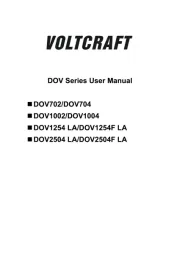
10 Maart 2025

11 December 2024

11 November 2024

8 Juni 2024

4 Mei 2024

4 Mei 2024

8 April 2024
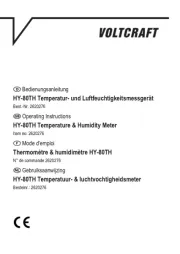
8 April 2024

26 Maart 2024
Handleiding Meetapparatuur
- Velleman
- Benning
- VirtuFit
- Tektronix
- Beha-Amprobe
- Trotec
- HT Instruments
- Tempest
- Pancontrol
- Eastron
- KS Tools
- Smart365
- Ideal
- PICO
- Beurer
Nieuwste handleidingen voor Meetapparatuur
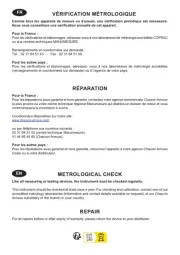
14 September 2025

13 September 2025
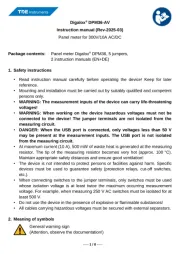
13 September 2025

13 September 2025
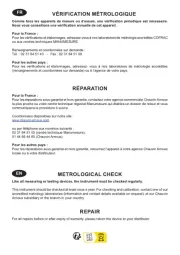
12 September 2025
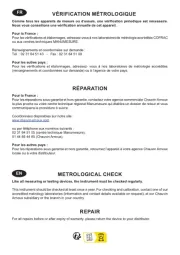
12 September 2025

12 September 2025
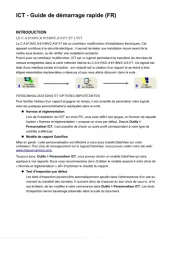
11 September 2025
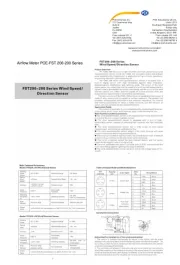
11 September 2025
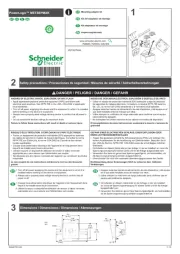
8 September 2025